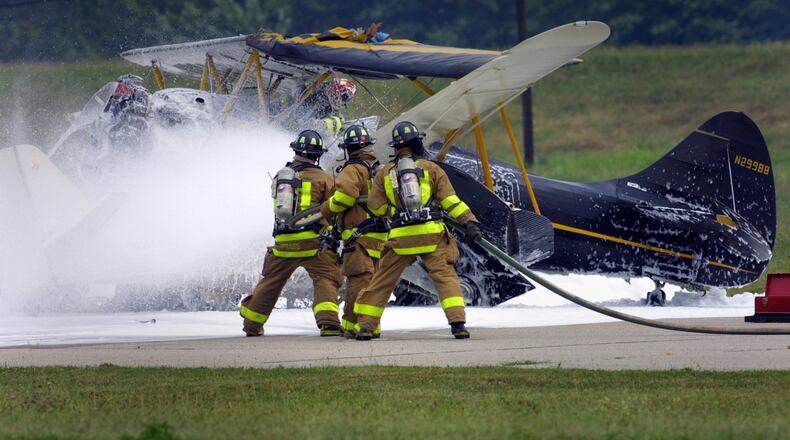“As a former sheriff, I understand the importance of training for emergency situations,” said Plummer, who was Montgomery County sheriff before becoming a state lawmaker.
“I also understand that the health and safety of our first responders is vitally important. Banning the use of PFAS foam in a training setting is a straight-forward approach to prioritizing their health,” he said.
The law allows the use of PFAS-containing foam in an actual emergency, and allows testing with proper containment, treatment and disposal measures. It also allows the manufacture, sale or distribution of such foam.
Jim Burneka, health and safety director for Dayton FireFighters Local 136, said the bill is a good first step, but he would like to see lawmakers establish a timeline for getting rid of PFAS foam altogether.
“I’m glad that that the state passed that law, and we won’t be training with that and we won’t be exposing our waterways and our firefighters to these harmful carcinogens,” he said. “However, I would like them to take it a step further and try to get rid of these harmful foams and switch to safer alternatives that no longer have PFAS in them.”
City of Dayton officials say the city no longer releases PFAS containing firefighting foam during training, but they do keep some on hand for use during emergency fire suppression.
“While new products have been introduced into the marketplace for flammable liquid fires, the fire suppression effectiveness of those products during emergency operations is still being evaluated industry-wide,” said Dayton Fire Chief Jeff Lykins. “The city will continue to evaluate best practices and industry data for alternative products to ensure safety and effectiveness in emergency response.”
Wright-Patterson Air Force Base also has used PFAS-containing foam.
Base spokeswoman Stacey Geiger said the new state law does not impact WPAFB, a federal installation. But she said the Air Force in recent years has replaced legacy firefighting foam in emergency vehicles and hangar fire prevention systems with a formula that meets U.S. EPA guidelines.
“The Air Force also implemented restrictions for training and use of firefighting foam at all installations, to include Wright-Patterson, limiting foam use to emergencies only and for specially-approved training in specific training areas with appropriate containment systems,” she said. “Lastly, the Air Force requires immediate clean-up of any foam used in an emergency, retrofitting emergency response vehicles to prevent inadvertent release or leaks.”
“Protecting the environment and the health and safety of our airmen, families, and neighbors in the surrounding communities around the installation is a top priority,” Geiger said.
Per- and polyfluoroalkyl substances ― or PFAS ― are used in waxes, some food packaging, water-repellent fabrics, nonstick products, polishes and firefighting foam. Exposure to the chemicals can lead to birth defects, increase cholesterol levels and cause some forms of cancer, according to the Centers for Disease Control and Prevention.
PFAS substances are sometimes called “forever chemicals” because they don’t break down. They have been detected in some drinking water systems in southwest Ohio, usually well below the federal recommended levels.
While many fire departments have moved away from training with PFAS-containing foam, Plummer said he wants to make sure all of them do.
Bill sponsor state Rep. Brian Baldridge, R-Winchester, said that as a former active duty fire medic, he understands the importance of learning about differing firefighting foams during training.
“However, the health risks involved in the continued usage of PFAS are simply not worth it,” Baldridge said. “While this bill would prohibit the use of this harmful chemical during firefighter training, there are certain exemptions listed in the bill to ensure safety to all should PFAS need to be used in the midst of an emergency situation.”
Staff Writer Ismail Turay Jr. contributed to this report
About the Author

